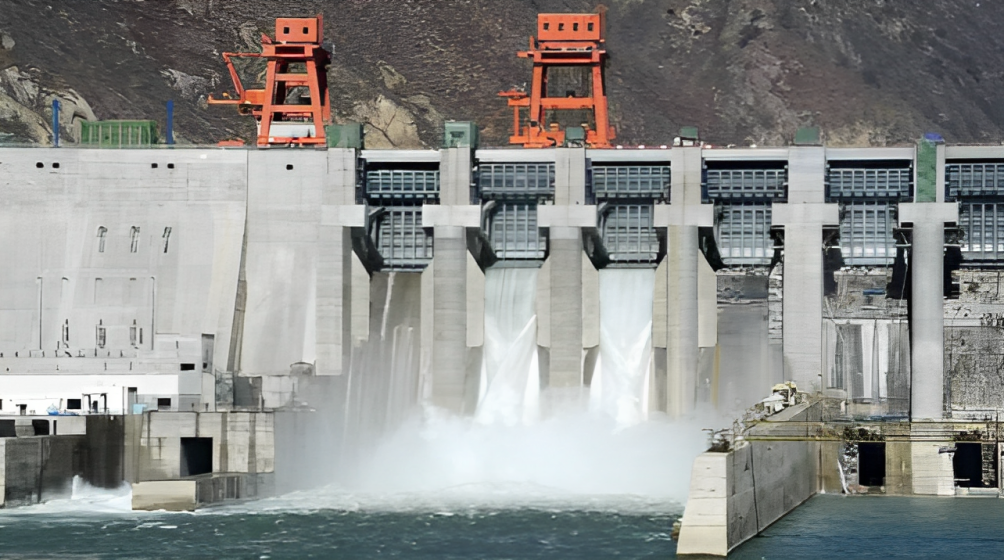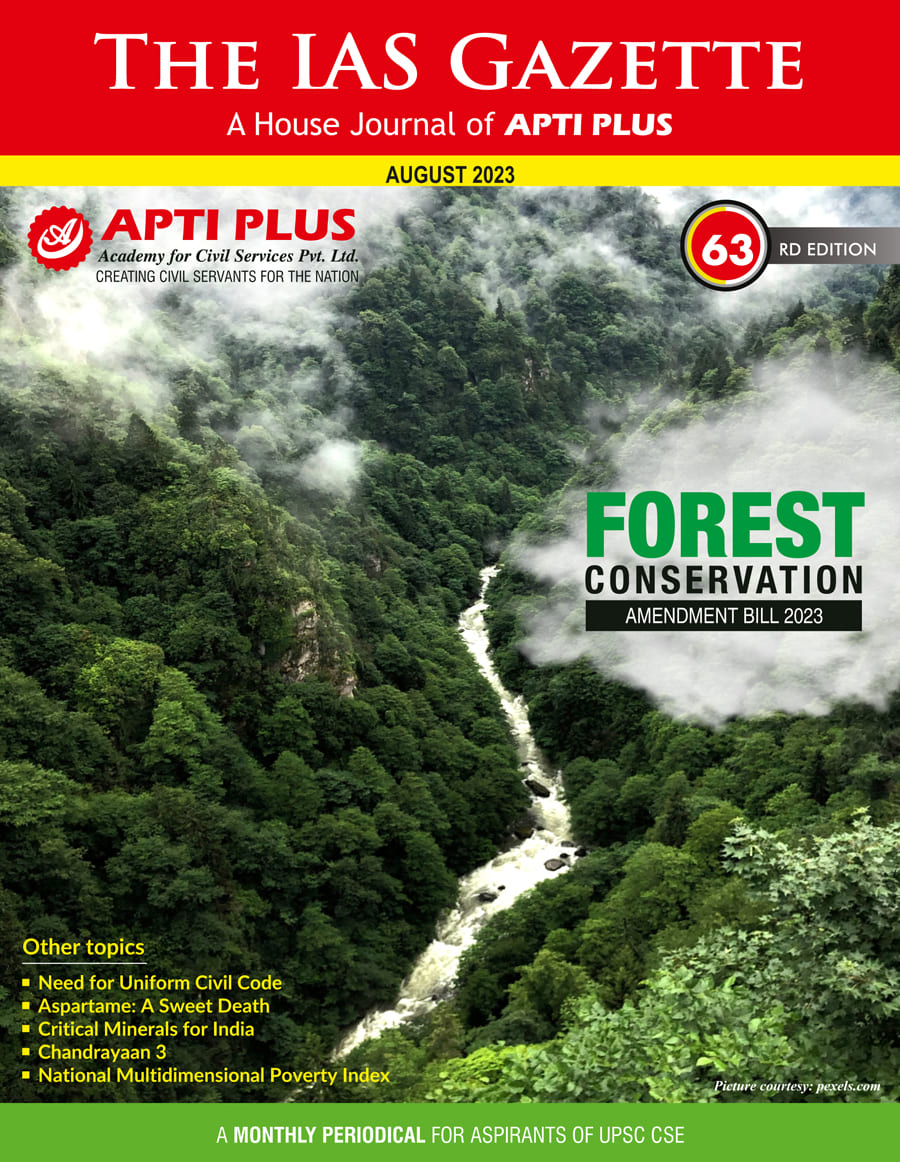Description

Copyright infringement not intended
Picture Courtesy: The Wire
Context: NHPC (National Hydroelectric Power Commission), the state-owned hydropower giant, has entered into a preliminary pact with RITES, a leading transport consultancy and engineering firm, to construct a railway siding for its 2,880 MW Dibang multipurpose project in Arunachal Pradesh.
Details
- The Dibang project is one of the largest hydroelectric projects in India and will provide clean and renewable energy to the region.
- The strategic partnership between NHPC and RITES will leverage the expertise of both organisations and provide comprehensive and efficient solutions for developing rail infrastructure facilities for NHPC Dibang and other upcoming projects in Arunachal Pradesh.

Hydropower Potential in Arunachal Pradesh
- Arunachal Pradesh, located in the northeastern region of India, is endowed with significant hydropower potential due to its hilly terrain, abundant rivers, and high rainfall. The state's hydropower potential has been recognized for decades and has drawn attention from both the government and private sectors for its potential to contribute to India's energy needs and economic development.
Favourable Conditions
- Abundant Rivers: Arunachal Pradesh's geography is marked by the presence of numerous rivers and tributaries, including well-known ones like the Brahmaputra, Siang, Lohit, and Subansiri. These rivers carry substantial water flows, which is a fundamental requirement for generating hydropower. The elevation changes in these rivers, often resulting in steep gradients, can be harnessed through hydropower systems like run-of-the-river or dam-based projects.
- Hilly Terrain: The hilly and rugged terrain of Arunachal Pradesh is advantageous for the construction of reservoirs and dams. Hydropower plants typically require the creation of reservoirs through dam construction, where water is stored at a higher elevation and released to generate electricity. The natural topography of the region aids in forming these reservoirs and managing water flow effectively.
- High Rainfall: Arunachal Pradesh receives substantial rainfall during the monsoon season. This high rainfall contributes to the ample availability of water, which is essential for hydropower generation. The heavy precipitation replenishes the water bodies, ensuring a consistent flow that can be used to turn turbines and generate electricity throughout the year.
Given these favourable conditions, Arunachal Pradesh has the potential to become a significant hub for hydropower generation, contributing to India's renewable energy goals and reducing its dependence on fossil fuels. However, it's worth noting that the development of hydropower projects should be approached with careful consideration of environmental and social impacts, including the potential for habitat disruption, land displacement, and effects on local communities and ecosystems.
Significance
- Clean Energy Generation: Hydropower is considered one of the cleanest forms of energy production. Unlike fossil fuels, it doesn't emit greenhouse gases or contribute to air pollution, which is vital for combating climate change and improving air quality. By utilizing hydropower, India can significantly reduce its carbon footprint and meet its renewable energy targets.
- Energy Security: Developing a diverse energy portfolio is crucial for any country's energy security. Hydropower adds a stable and predictable source of electricity to the mix, helping to reduce dependence on imported fossil fuels. This diversification can enhance India's resilience to supply disruptions and price fluctuations in global energy markets.
- Economic Development: Hydropower projects have a multiplier effect on the economy. The construction, operation, and maintenance of these projects create job opportunities across various skill levels, ranging from engineering and construction to administration and management. Moreover, the investments required for these projects can attract both domestic and foreign capital, further boosting economic growth.
- Regional Development: The development of hydropower can play a significant role in transforming the socio-economic landscape of regions like Arunachal Pradesh and the northeastern states. Infrastructure development associated with hydropower projects, such as roads and transmission lines, can open up remote areas, promote trade, and improve connectivity. This, in turn, can raise living standards, enhance educational and healthcare facilities, and contribute to overall regional development.
Steps Taken by India
- Policies and Incentives: The Indian government has implemented various policies and incentives to encourage the growth of the hydropower sector. These may include financial support, subsidies, tax benefits, and favourable tariff structures. These measures are designed to attract investment and make hydropower projects financially viable for developers.
- Project Allocation: The allocation of hydropower projects involves assigning them to different entities for development. In India, both public sector entities like the National Hydroelectric Power Corporation (NHPC) and private players have been involved in developing hydropower projects. The allocation process has evolved to include mechanisms like competitive bidding and joint ventures, which aim to increase efficiency, transparency, and competition in project development.
- Environmental Clearances: Environmental considerations are crucial when developing hydropower projects to minimize negative impacts on ecosystems and local communities. Stringent environmental regulations and clearances are in place to ensure that projects are designed, constructed, and operated in an environmentally sustainable manner. These regulations help address concerns related to habitat disruption, water flow alterations, and other ecological effects.
Challenges
- Environmental Concerns: The construction of dams and reservoirs can indeed have significant environmental impacts. Altering natural river flows and creating reservoirs can disrupt aquatic ecosystems, impact fish migration, and change the river's course. These changes can have cascading effects on downstream ecosystems, affecting water quality, sediment transport, and nutrient cycling. Minimizing these impacts requires careful environmental assessment, mitigation measures, and adherence to regulations designed to protect local ecosystems.
- Land Acquisition: Large-scale hydropower projects often require substantial land for dam construction, reservoir creation, and related infrastructure. Acquiring this land can be complex, especially in areas where land ownership is intricate and communities are directly affected. Resettlement of communities that might be displaced due to the project can lead to social disruptions, loss of livelihoods, and cultural changes. Proper compensation, consultation with affected communities, and sustainable resettlement plans are crucial to address these challenges.
- Geopolitical Considerations: Hydropower projects situated in border regions can indeed create geopolitical tensions, especially when these projects impact transboundary rivers. In the case of Arunachal Pradesh, the state's proximity to international borders adds a layer of complexity to hydropower development. Neighbouring countries might be concerned about water flow changes, potential downstream impacts, and strategic implications. Open communication, diplomacy, and bilateral agreements are necessary to address these concerns and maintain regional stability.
Way Forward
- Sustainable Development: Prioritizing sustainability is essential. This involves conducting thorough environmental impact assessments, implementing mitigation measures to reduce ecological impacts, and adopting best practices for construction and operation. Balancing energy production with ecosystem conservation is crucial for long-term success.
- Community Engagement: Engaging with local communities throughout the project lifecycle is vital. Including them in decision-making processes, addressing their concerns, and ensuring fair compensation and benefits can help foster acceptance and support for the projects. This engagement should be continuous and transparent.
- Technological Innovation: Investing in research and development can lead to technological advancements that improve the efficiency and environmental performance of hydropower projects. Innovation in turbine design, fish-friendly infrastructure, and sediment management can contribute to more sustainable projects.
- Integrated Planning: Considering hydropower within the context of broader energy and water resource management is key. Integrated planning helps ensure that hydropower development aligns with the region's overall needs, including water supply, irrigation, and ecosystem conservation.
- International Collaboration: Hydropower projects that have cross-border implications should be addressed through diplomatic channels and international cooperation. Collaborative approaches can help alleviate concerns and minimize geopolitical tensions. Sharing data, conducting joint impact assessments, and adhering to bilateral agreements are important aspects of this collaboration.

Conclusion
- The path to realizing Arunachal Pradesh's hydropower potential demands a holistic approach, one that harmonizes the intricate web of environmental, social, economic, and geopolitical considerations. By adhering to the outlined roadmap for sustainable development, India stands poised to harness this invaluable renewable energy source, steering clear of detrimental consequences while ushering in a brighter future for its communities, the region, and the nation as a whole.
|
PRACTICE QUESTION
Q. What is the potential of hydropower plants in the North East region of India, and how can they contribute to the energy landscape? What are the significant benefits and challenges associated with hydropower development in this area? In light of these factors, what strategies and approaches could be employed to ensure responsible and sustainable hydropower growth in the North East?
|
https://economictimes.indiatimes.com/industry/energy/power/nhpc-signs-pact-with-rites-to-construct-railway-siding-for-2880-mw-dibang-project/articleshow/102912588.cms?from=mdr
Array
(
[0] => daily-current-affairs/dibang-project
[1] => dibang-project
)








